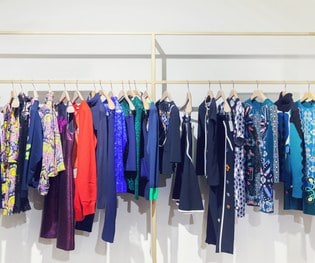
A new study shows that Canadians are shopping less at department stores and fashion retailers.
Studies show that in the past two years, 31 per cent of Canadians 18 years and older are shopping for fashion less often, while only 14 per cent are shopping more. The decline in shopping directly relates to the decrease of income—37 per cent of those who have a household income under $40,000 are shopping less, whereas only 22 per cent of people have a household income of $100,000.
Between May 15 and May 18, 1,566 Canadian adults were involved when the survey was conducted.
This week, Sears Canada announced it would be liquidating and selling all its stores. “We see the continued shift to value shopping…It’s a collective psyche we noticed kicking in around 2010. Not 2008 when we heard about the economic crisis in the States but for us it was about two years later. After many years of people just spending on credit cards and ‘retail therapy’, suddenly budgeting was becoming a mainstay,” explains David Ian Gray of DIG360 Consulting Ltd. “The frugality isn’t just about shifting to Wal-Mart. It also means just buying less.”
According to a recent report, 18 per cent of Canadians shopped at discount outlet malls in the past year.
“We expect this to grow with the addition of more of the concepts in the Canadian retail landscape” says the study. “Originally, Department Stores were a modern solution to the shopping convenience demanded by a growing urbanite population. They housed a wide range of products in one building and were a beacon of traffic. Then came the explosion of enclosed shopping centres, then global specialty retailers, power centres and now high streets and ecommerce.
“Notably, 72 percent of Canadians wait for sales to shop at Department Stores, reflecting the national propensity to more budget conscious households and the fiscal challenge facing these stores. And there are the naysayers: 35 percent of us feel the Department Store concept is tired and dated, and 35 per cent say they are too big and waste of time.” According to David Ian Gray, where that retail therapy has picked up has been in the personal care sector and the cosmetics category within Department Stores “is going through the roof right now.”
A study has found that shopping for fashion continues be popular among young people. In fact, 31 per cent of 18-24 year olds are increasing their fashion shopping in the past two years. Whereas 23 per cent of this age group are shopping less.
For those who were around the age of 45, there was a significant drop in fashion shopping. With just seven percent of those 45 or older reporting an increase in fashion shopping and 36 per cent a decrease.
It has been reported that 37 per cent of women are shopping less for fashion, which should alarm retailers for women’s apparel. The report said that in the past 12 months, 54 per cent of Canadian adults shopped in a department store for clothes. 76 per cent shopped in department stores within the past year for fashion.
According to the study, two-thirds of Canadians enjoy the variety and brands carried by department stores, and only 25 per cent prefer shopping for brands with standalone stores over the clothes they sell in the department stores.
Hudson’s Bay Company leads at 31 per cent of adult Canadians buying in the past year. Sears was in second with 28 per cent and with substantial store coverage in Quebec. Over half of adult Canadians shop at Wal-Mart for some fashion.
The study also states that Department stores are being introduced to younger shoppers via Nordstrom.
“Those who are generally shopping less are favouring Wal-Mart, Sears, Winners and other value-priced department and specialty stores. While not a full range fashion department store, the regular traffic Wal-Mart generates for other merchandise has led two thirds (66 per cent) of Canadians with household income under $40,000 to report a clothing purchase in the past year. Notably, almost half (46 per cent) of those with income over $100,000 also report purchasing clothes at Wal-Mart,” explains the study.
















